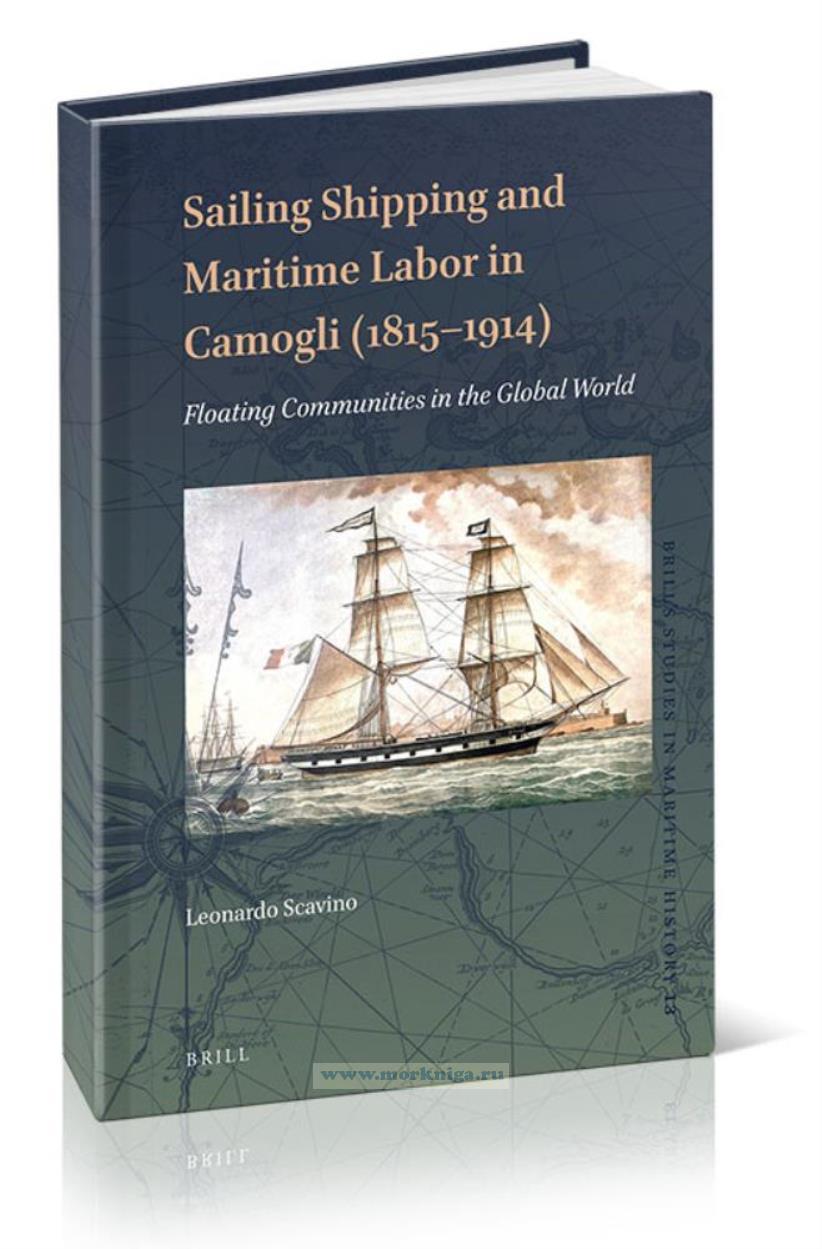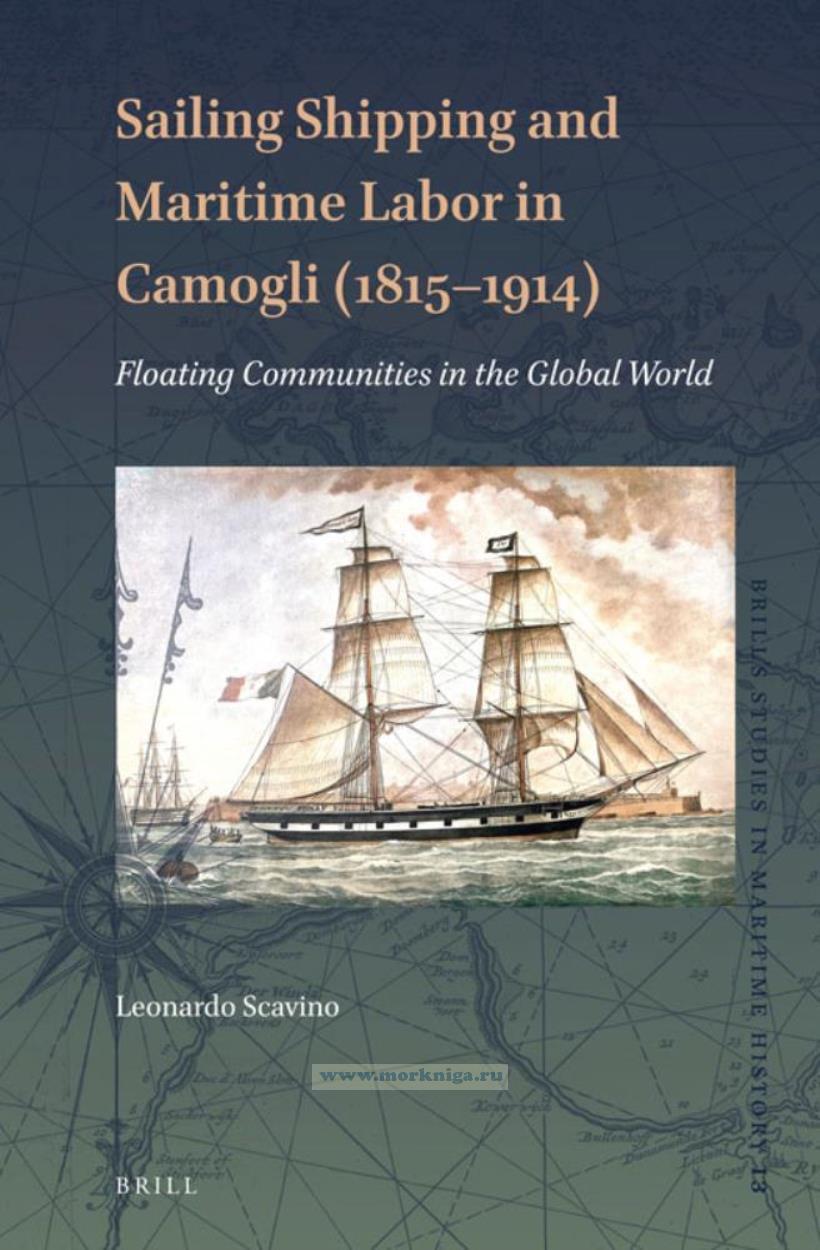Sailing Shipping and Maritime Labor in Camogli (1815-1914)/Парусное судоходство и морской транспорт в Камольи (1815-1914)
Книга на английском языке.
This book explores the historical evolution of a Mediterranean village that radically changed its core self-sustaining activities in less than a century, from fishing for anchovies in the Ligurian Sea to rounding Cape Horn. Drawing on a vast set of unpublished archival sources, this book addresses a micro-historical subject to investigate macro-historical processes, including the technological transition from sail to steam and globalization. At the core of the book lie Camogli’s rise in the world shipping industry and the transformations that occurred in its maritime labor system; seaborne trade, maritime routes, individual careers in seafaring represent the vivid elements that contribute to the book’s dive into the nineteenth-century maritime world.
Contents
Acknowledgments
List of Tables, Figures, Maps and Illustrations
Introduction
1 Liguria and Camogli: A Maritime Region (Late 18th-19th Century)
1 Introduction
2 Ligurian Communities and Merchant Shipping before Transition
3 The Ligurian Maritime Region in the 19th Century
3.1 Port Movement
3.2 The Merchant Fleet
3.3 The Shipbuilding Industry
3.4 Maritime Labor
4 Camogli: Port, Town and People
4.1 The Port and Infrastructure
4.2 Urban Development
4.3 Demography
5 Conclusions
2 Camogli’s Seafaring Activities in the Late 18th Century
1 Introduction
2 The Merchant Fleet
3 Camogli: A Fishing Center
4 Camogli in the Tyrrhenian Shipping System
5 A Long-Lasting Trade: Tuscan Charcoal
6 Conclusions
3 Seafaring Activities in the Extended Mediterranean (1830-70)
1 Introduction
2 The Merchant Fleet
3 Sailing the Black Sea
4 Historical Background
5 Merchant Communities and Commercial Networks
5.1 The Greek Networks
5.2 The Ligurian Networks
6 Camogli and the Black Sea Commercial Networks
7 To the Black Sea
8 From the Black Sea
9 Camogli at British Ports
10 Conclusions
4 Seafaring Activities on a Global Scale (1870s-1900s)
1 Introduction
2 The Transition from Sail to Steam: New Technologies in Shipping
3 The Merchant Fleet
4 Expanding across the Oceans (1870-90)
4.1 Migrants, Guano, Coolies and Other Traffic: Camogli Ships in the Latin American Area (Late 1860s-Early 1880s)
4.2 Camogli’s Shipping and the Alternatives to Suez
5 Resilience at the Turn of the Century (1890-1914)
5.1 Geography of Camogli’s Sailing Cross-Trade
5.2 Merchandise
5.3 The Steam Fleet of Camogli: Routes and Shipping Patterns
6 Conclusions
5 Shipowners and the Shipping Business in Camogli
1 Introduction
2 Shipping Families
2.1 Schiaffino
2.2 Olivari
2.3 Mortola
2.4 Razeto
2.5 Other Families (Repetto, Bertolotto, and Degregori)
3 Individual Ownership and Communitarian Shipping
3.1 The Carati System
3.2 The Societa di Mutua Assicurazione Marittima Camogliese (1851)
3.3 The Foundation of the Nuova Camogliese (1873-78)
4 Shipping and Investment in the Community
4.1 The Institution of the Nautical School (1874)
4.2 The Construction of the Teatro Sociale of Camogli (1876)
5 Shipowners Facing Transition
5.1 Financial Crisis: The Collapse of the Communitarian Maritime Credit System (1878-88)
5.2 Shipowners and the National Maritime Debate (1880-83)
6 Conclusions
6 Maritime Labor in Camogli during Transition
1 Introduction
2 Maritime Registers as Historical Sources
2.1 Methodology
2.2 Maritime Actors
3 The “Floating Communities” of Camogli
3.1 The Endogenous Labor Market before the 1880s
3.2 Kinship and Community: Onboard Relationships in Traditional Seafaring
3.3 Camogli in the Global Challenge
3.4 Local and Global in Conflict
4 Wages and Professionalization: Labor Mobility in the Age of Sail
4.1 From “Share” to Salary
4.2 Technological Advance, Labor Productivity, and Deskilling
4.3 Professionalization: Captains and Mates in Transition
5 Abandoning Camogli’s Fleet
5.1 From Sail to Steam
5.2 Quitting Maritime Careers
6 Conclusions
7 Leaving the Community: Professional Transfer and Labor Migration
1 Introduction
2 The Emigration and Desertion of Camogli’s Global Seafarers
3 Different Flag, Same Sails: Maritime Labor Migration in Europe
4 Ligurian Migration to Peru and Argentina
4.1 Labor Migration
4.2 The Shipping Business and Entrepreneurship
5 A Case of Migration by Accident: The Foundation of Camogli’s Community in Tristan da Cunha (1892)
6 Conclusions
Conclusions
Appendixes
Archival Sources
Bibliography
Index

